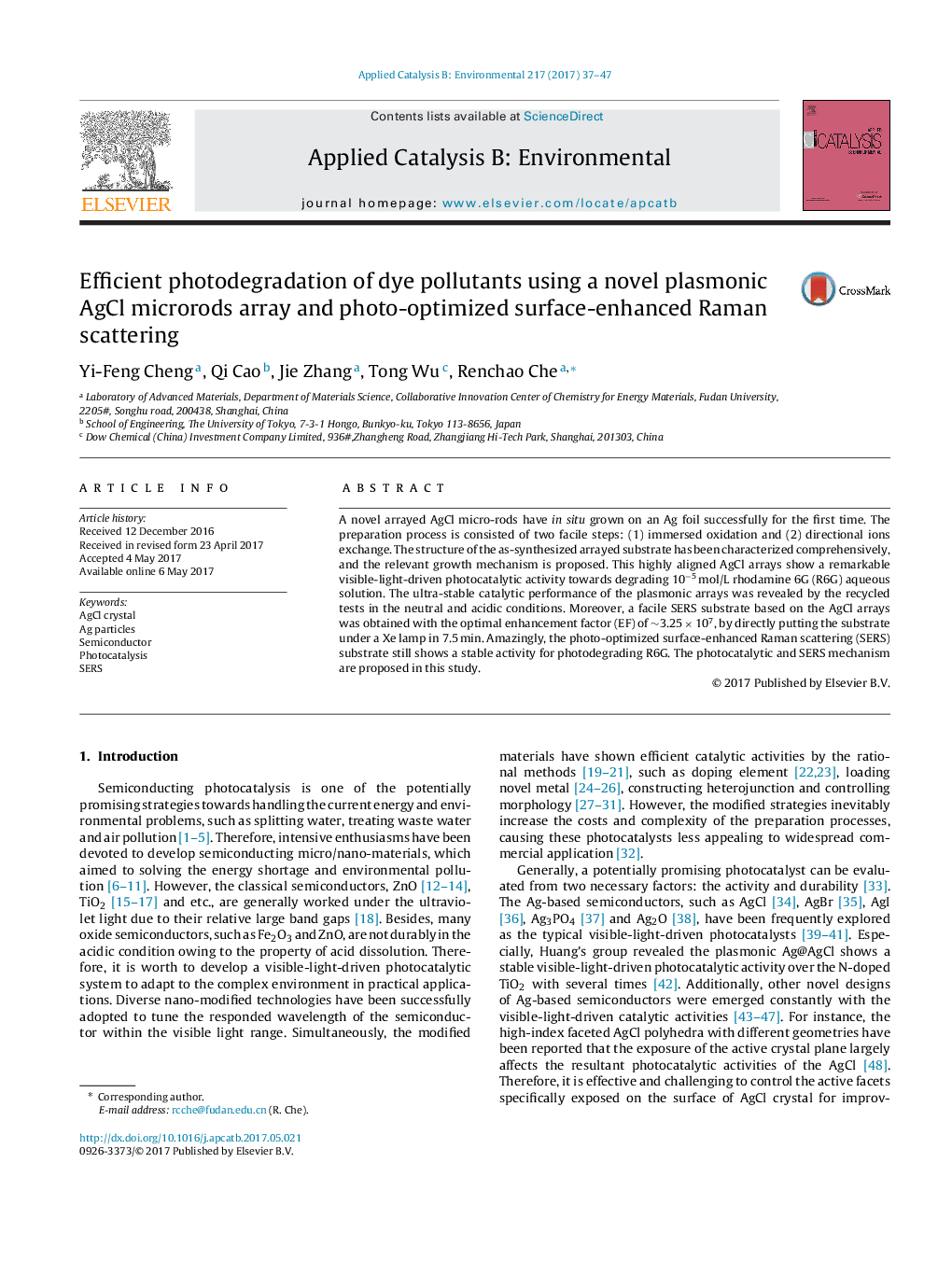| Article ID | Journal | Published Year | Pages | File Type |
|---|---|---|---|---|
| 6453908 | Applied Catalysis B: Environmental | 2017 | 11 Pages |
â¢A novel plasmonic AgCl array was prepared.â¢Directional ions exchange shaped a rod-like AgCl microcrystal.â¢This array exhibited an urtal-stable visible-light-driven photocatalytic activity.â¢A facial photo-irradiation inspires to fabricate a simply SERS substrate based on photosensitive materials in detecting contaminants of one-millionth concentration.
A novel arrayed AgCl micro-rods have in situ grown on an Ag foil successfully for the first time. The preparation process is consisted of two facile steps: (1) immersed oxidation and (2) directional ions exchange. The structure of the as-synthesized arrayed substrate has been characterized comprehensively, and the relevant growth mechanism is proposed. This highly aligned AgCl arrays show a remarkable visible-light-driven photocatalytic activity towards degrading 10â5Â mol/L rhodamine 6G (R6G) aqueous solution. The ultra-stable catalytic performance of the plasmonic arrays was revealed by the recycled tests in the neutral and acidic conditions. Moreover, a facile SERS substrate based on the AgCl arrays was obtained with the optimal enhancement factor (EF) of â¼3.25Â ÃÂ 107, by directly putting the substrate under a Xe lamp in 7.5Â min. Amazingly, the photo-optimized surface-enhanced Raman scattering (SERS) substrate still shows a stable activity for photodegrading R6G. The photocatalytic and SERS mechanism are proposed in this study.
Graphical abstractDownload high-res image (309KB)Download full-size image
